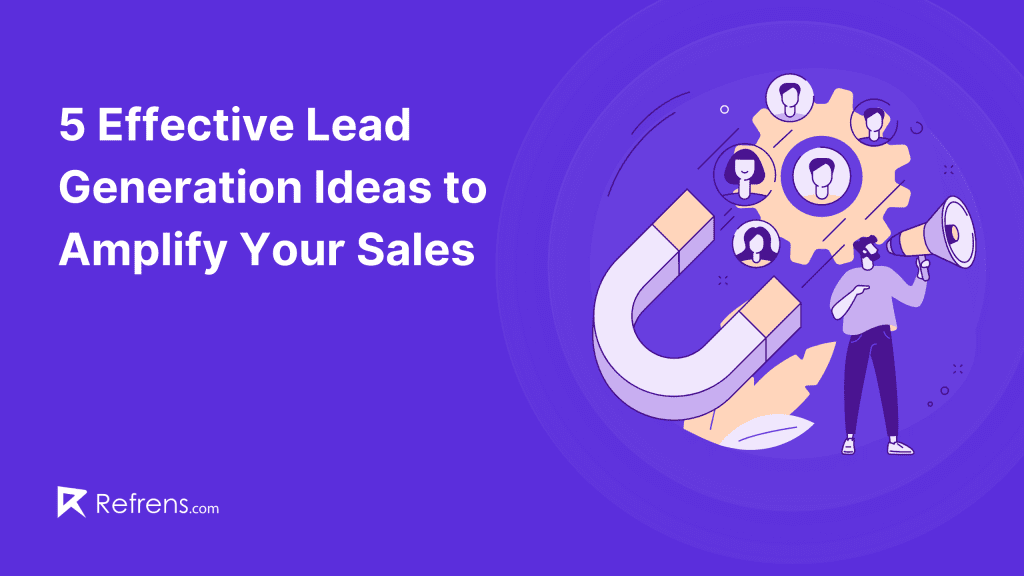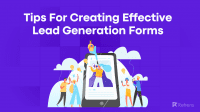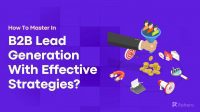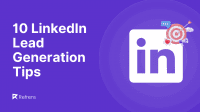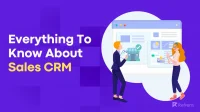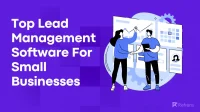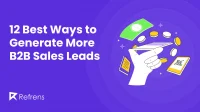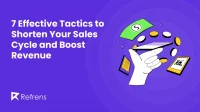Stats reveal that companies with a strong lead generation process can generate up to 133% more revenue. But, you can’t solely rely on crowded social media platforms, or competitive search engines to get quality leads. So, to convert interested prospects into paying customers, your marketing strategy needs to go beyond surface-level advertising and content sharing.
A more effective approach to lead generation is to collect information that allows you to meet customers in a more personal setting — say in their emails for example. However, customers may be skeptical about providing their personal information unless you offer something valuable in return. This is where lead magnets come into play.
Lead magnets are designed to grab attention and nudge your target audience into your sales funnel. Today, we’ll reveal five lead magnet ideas that you can use to entice leads and boost your sales.
First…
What Is a Lead Magnet?
A lead magnet is an incentive you offer to potential customers in exchange for their contact information–primarily their email addresses and full names. You collect these details so you can reach out to potential buyers, nurture relationships with them, and eventually convert them into paying customers.
Lead magnets provide immediate value to your prospects. So, they either help potential clients solve problems or offer something beneficial. For instance, you may offer an exclusive discount code in exchange for filling out a form on your website. Here’s an example:
Using lead magnets comes with several benefits. For one, a strong lead magnet can help drive more traffic to your website. It can also help you collect valuable data for segmenting your audience, and support your overall content marketing strategy.
Top 5 Lead Generation Strategies to Skyrocket Your Sales
Effective lead magnets must align with the needs and interests of your target audience. So, thorough research through surveys, observing competitors/ similar brands, or looking at industrial trends can help you discover offers that appeal to your ideal clients. Use that information to develop the perfect lead magnets for newer prospects.
That said, here are five compelling lead magnet ideas you should be trying out.
1. Ebooks
Ebooks are powerful lead magnets that provide in-depth information on a topic your audience is interested in. Offering a free ebook can be a great way to position your business as an authority in your industry because it’s focused on providing valuable insights to potential customers.
You can offer ebook lead magnets in the form of white papers, industry reports, case studies, or ultimate guides on how to get something done.
For your ebook to be more effective:
- Choose a relevant topic that addresses a specific pain point or interest of your target audience. This is easy to identify once you have a proper buyer persona to depict your ideal customer.
- Consider things like demography, location, challenges, interests, and other data that are relevant to your services or products.
Remember, proper audience research can help you identify what your target customers may like.
Prospects are more likely to exchange their contact if they see substantial value in what you offer. That’s why you must create an ebook landing page with a well-crafted copy that “sells” the content of your ebook.
Here’s an example:
This landing page by Tomorrow People starts with a lead capture form strategically positioned at the top. The ebook title “The new rules of content Marketing…” shows that they’re offering “new” and valuable insight. There’s a clear CTA button promoting visitors to download the ebook.
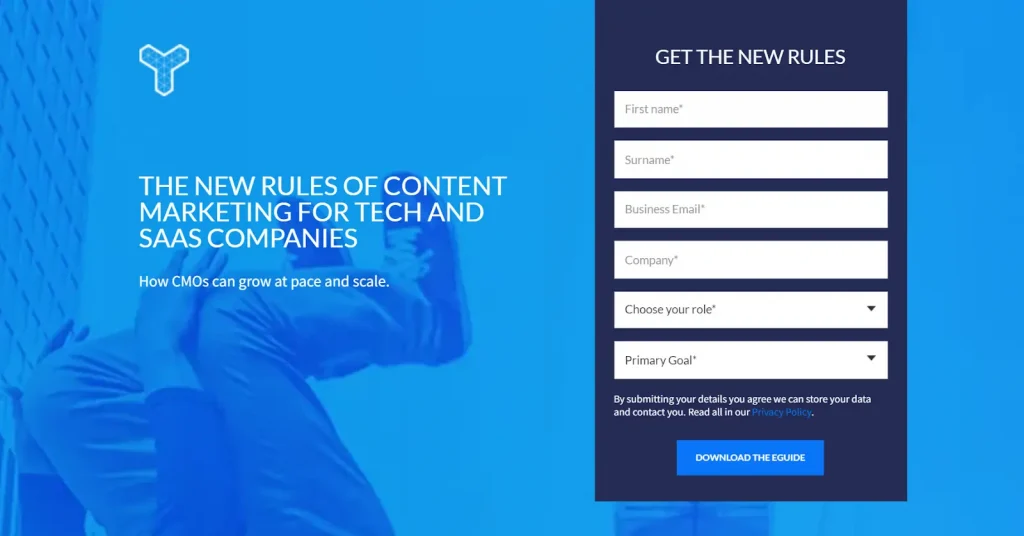
The landing page has equally engaging copy. “Tomorrow’s People” uses statistics to highlight key discussions in the ebook. This will further show prospects the insights they’ll gain. You don’t have to read your entire e-book from start to finish again to extract your key points for this type of copy. You can easily use an AI summarizer that can do the heavy lifting for you.
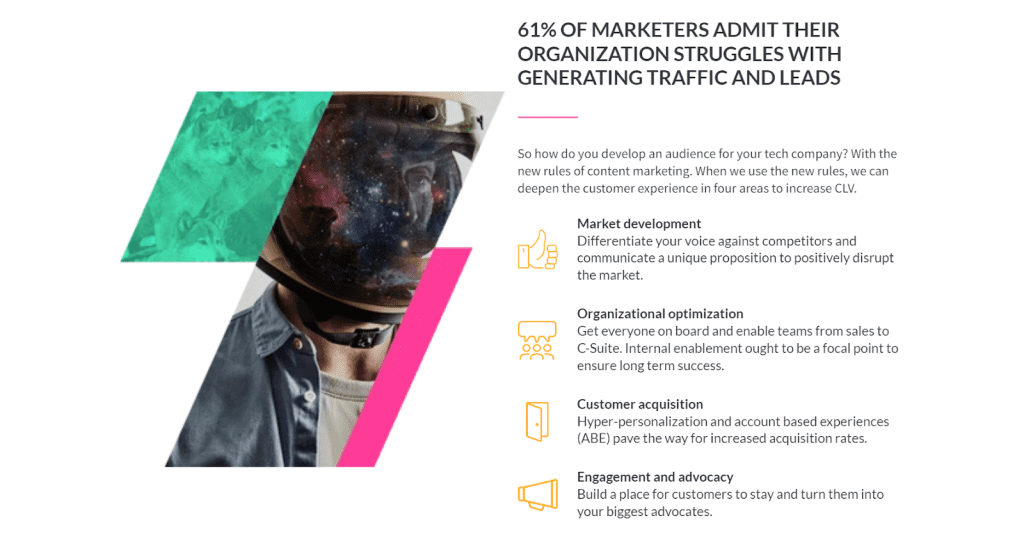
Beyond landing pages, create an appealing ebook that’s easy to read. Include images, infographics, graphs, and other types of interactive content. Provide actionable advice that your leads can implement too. You can also use the ebook to cross-promote other valuable resources or products.
2. Webinars
Webinars offer a live, interactive way to engage with your audience. You can use webinars to demonstrate your expertise and build a personal connection with potential leads. You also get to answer questions in real time, address specific concerns, and boost engagement with your audience through a well-planned webinar.
83% of marketers agree that webinars are effective content marketing tools, according to research by Zippia. The same research reveals that 73% of B2B webinar attendees become qualified leads.
Create a sense of value around your webinar by offering exclusive information, expert insights, or in-depth training. It’s also strategic to tailor your webinar around current trends in your industry. For instance, new tools that are gaining traction, economic policies, or even social media hype.
Your webinar landing page should encourage leads to sign up. Highlight key things that attendees will learn and prompt them to register. Here’s an example from Data Camp’s webinar landing page:
Like Preqin, if you’ll be inviting top names in your industry, add this to your landing page so leads are enticed.
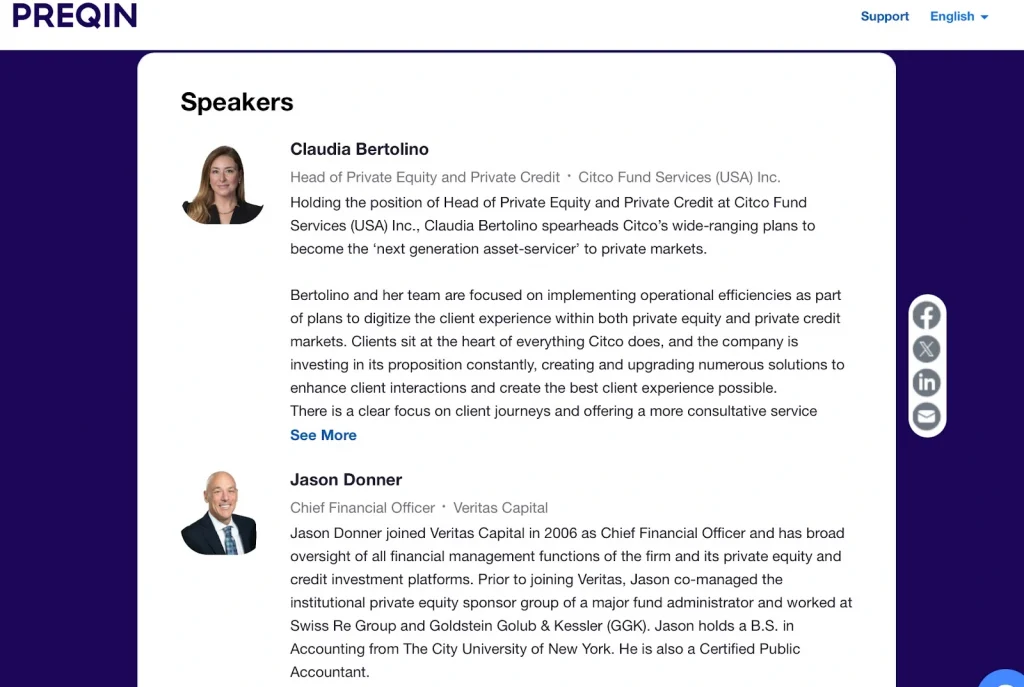
During your live webinars, make sure you deliver on your promise. That’s how prospects trust you even more. You can also use an online screen recorder to record your session and make it available for leads who may still be interested. See this example from Bizzabol:
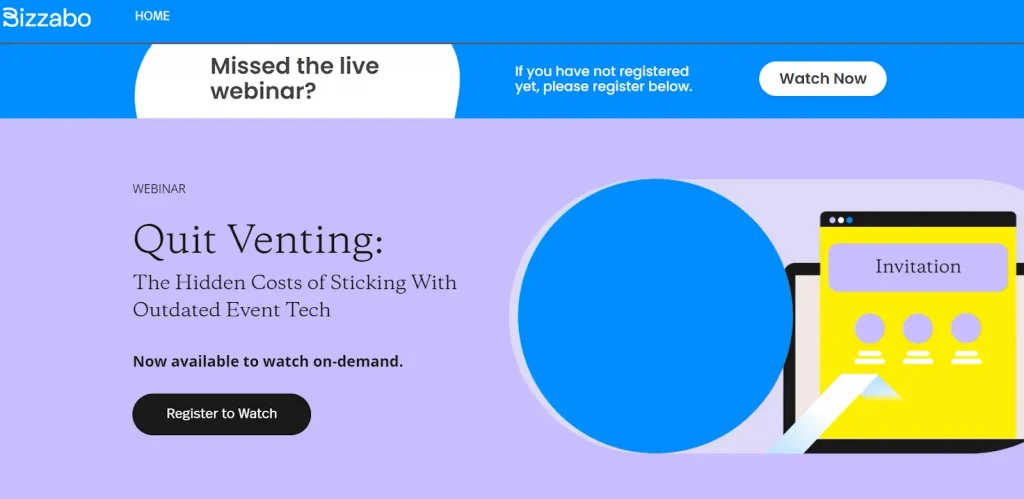
Interested leads can still go to your webinar landing page, fill out the form, and receive access to the recorded webinar.
3. Checklists
Checklists provide your audience with a clear, step-by-step guide to completing a task or achieving a goal. They are excellent lead magnets because they’re highly actionable— you’re outlining a straightforward process that readers can implement. A fitness coach for instance might offer a “10-step checklist for starting a daily workout routine.” Unlike longer forms of content, checklists are concise and provide instant value.
Optimize your checklist by focusing on a prominent problem leads may have or an outcome they desire to achieve. Avoid a generic list with random information so leads won’t feel cheated or be unimpressed. Use bullet points, numbered lists, and a lot of white space to ensure that your checklist is easy to read. Also, be sure to brand your checklist as this will give it a personal touch.
Create a checklist landing page that highlights the problem you want to help your prospects solve. That’s what Product School does in the example below:
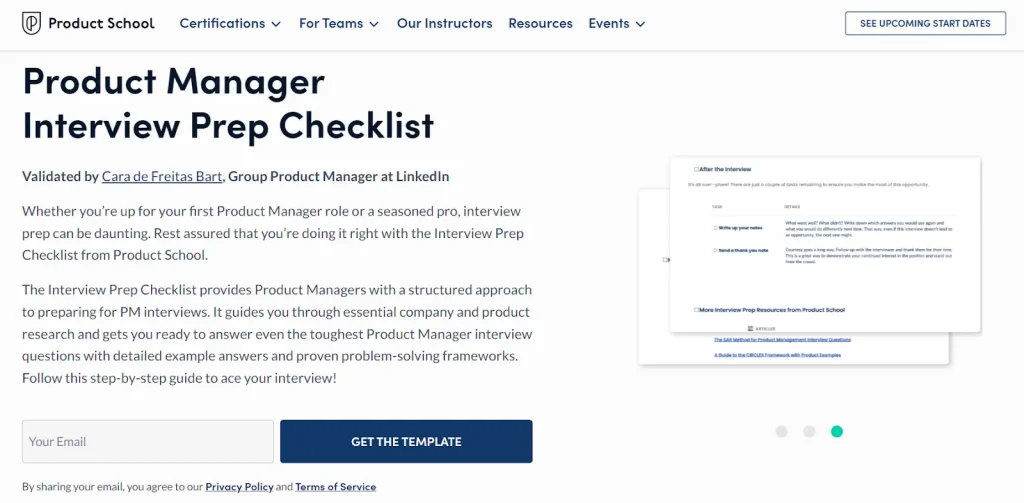
Product School starts with a summary of the challenges leads face and how the checklist can help. Then, they creatively outline key sections that users will find in the checklist.
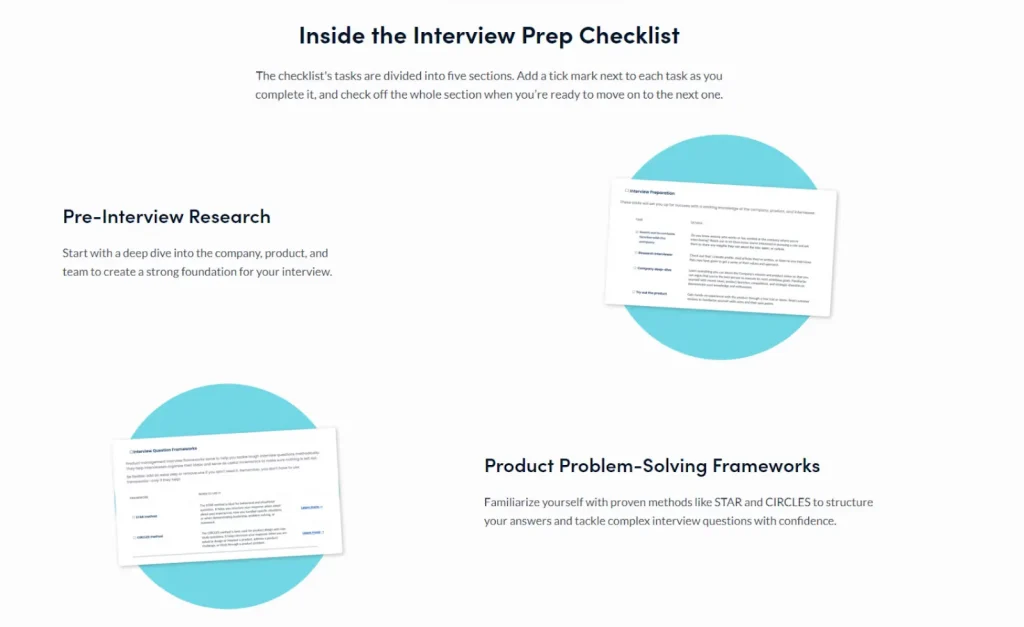
As with others, leave a form where leads can share their emails and other details to access the checklist.
4. Templates or Tools
A template is a pre-designed document that users can fill or customize for their specific needs. Usually, templates can help users perform a task, or develop a more effective structure for their activities. You can also create templates to help users simplify repetitive tasks. So, a productivity coach can create a template to help leads plan their daily morning routine.
In the example below, the HR platform Kenjo offers a free employee performance template as a lead magnet:
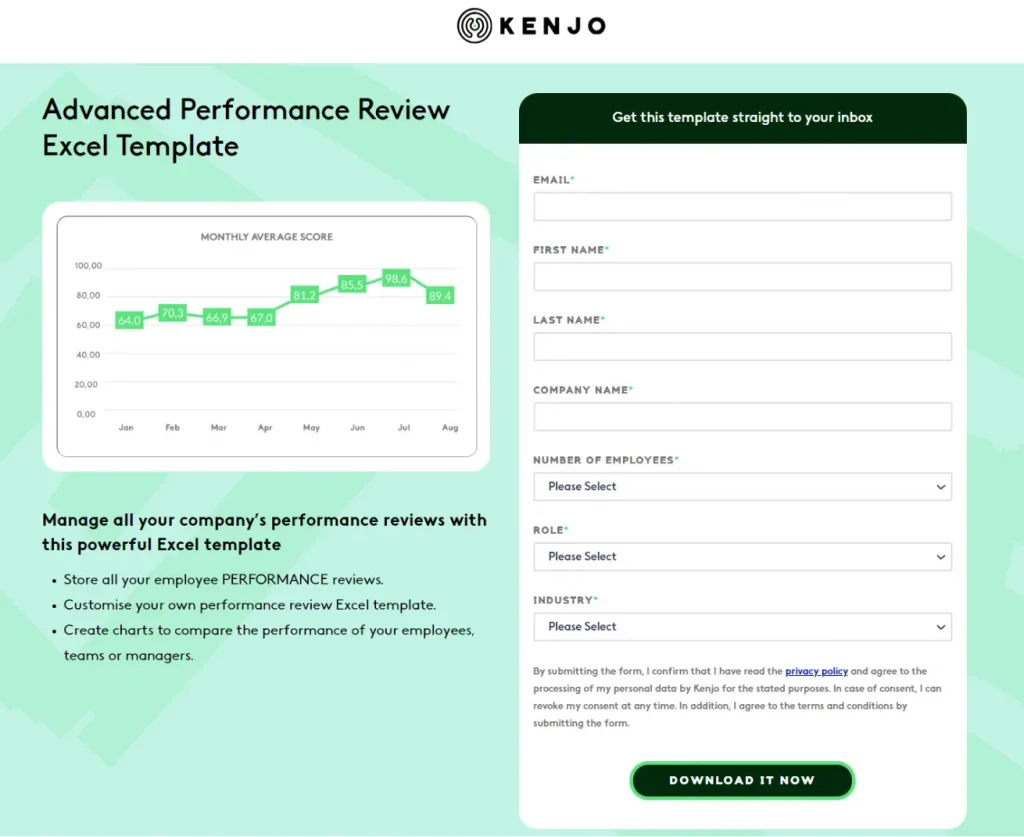
Platforms like Google Sheets, Notion, Canva, Google Docs, and so on allow you to create editable templates that users can customize. They only need to make a copy.
Tools, on the other hand, are interactive resources or software that can help users perform a task to achieve specific results more effectively. Some examples include calculators, automation, and so on. For instance, Refrens has a free invoice generator that allows users to create invoices and then prompts them to sign up afterward.
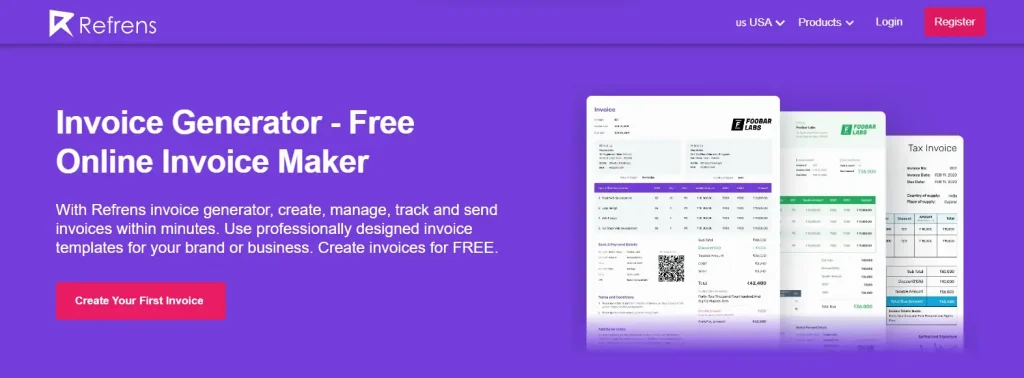
Templates and tools are among the most effective lead magnets because they provide immediate utility to your audience.
As with other lead magnets, your template or tool should solve a problem that’s frequent with your target audience. Also, provide clear instructions on how leads can use your template or tool effectively.
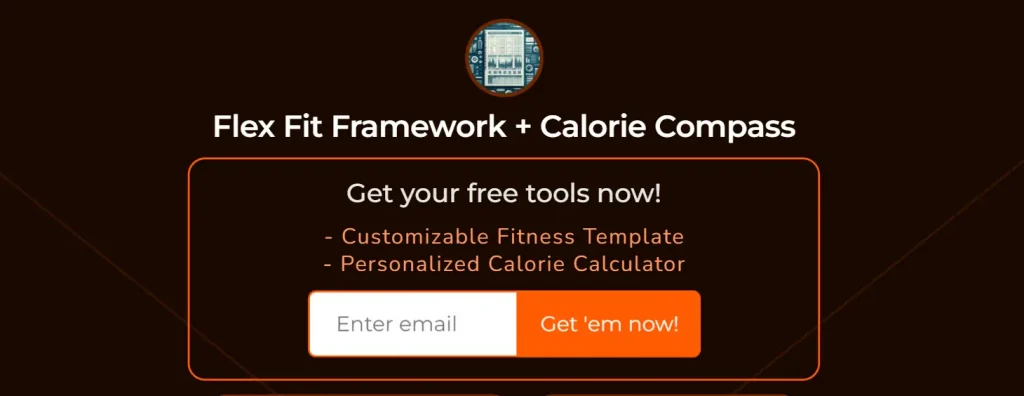
Like Flex Fit above, you can also offer a toolkit that includes templates, tools, and other resources that may be helpful to your audience.
5. Free Course
Finally, on the list of lead magnets ideas, we have free courses. A free course allows you to educate your audience over a series of sessions.
A free course will work for leads seeking to develop a skill or gain more knowledge. Also, since you’re delivering the course over multiple sessions, there’s room for continued engagement with your audience. This usually creates opportunities to promote your other products and services.
To create an effective free course lead magnet:
- Choose a high-value topic relevant to your audience and your offerings
- Structure the course into digestible lessons with practical insights and an AI quiz Maker to create interactive quizzes at the end of each video session.Include subtle calls-to-actions that encourage learners to interact with your course content.
Promote your free course with a well-optimized landing page. Highlight the key benefits of the course with emphasis on what your audience will learn. Add a clear call to action prompting leads to access the course. Here’s a good example from Graham Allcott’s landing page:
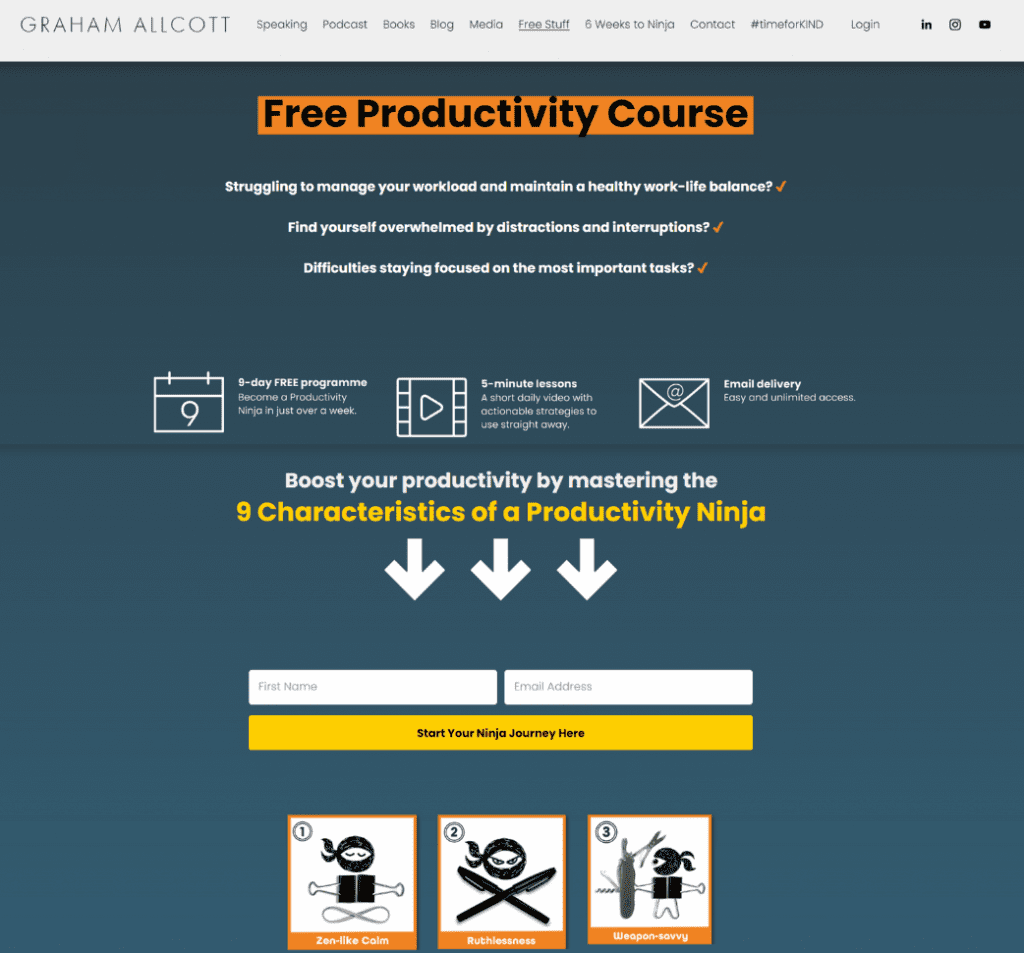
You can offer free video courses on online learning platforms like Udemy. Course creation platforms like Teachable, Thinkific, or Moodle are also quite useful for creating online courses. Or, you can deliver free email courses, which is a good way to maximize email marketing efforts.
Conclusion
Lead magnets are a powerful way to attract your target audience so you can turn them into loyal customers. The key to success lies in offering high-value content or resources that directly address the needs and pain points of your prospects.
Ebooks, webinars, checklists, templates, and free courses, are examples of high-converting lead magnets that you can use to attract qualified leads and boost your sales conversion rates.
Start experimenting with these lead magnet ideas to see which resonates most with your prospective customers. Don’t forget to continuously review and refine your approach for maximum impact. Good luck!

